Iasi is one of the biggest cities of Romania, situated in the north-east part of the country. Built on 7 hills, just like Rome, it is a picturesque city, with nice architecture and dreamy, green landscapes. Throughout history, Iasi has been the spiritual and cultural core of Moldavia (in Romanian: Moldova), one of the historical regions of Romania.
General info about Iasi
☑️ Best for: History buffs, couples
Iasi was the capital of Moldavia (one of Romania’s provinces). Later on, after the establishment of the Romanian state, it became the capital of the whole country for a brief period of time. Therefore, the city is full of history, waiting to be discovered by those who are interested. Also, it is a good destination for couples, especially knowing that while you’re strolling the streets you’ll follow the footsteps of the most important poet of the Romanian literature, Mihai Eminescu, who was a hopeless romantic himself.
☑️ Best time to visit: May – June
The best time to visit Iasi is in late May – early June, when all the linden trees around the city bloom. The yellow color of their flowers, combined with the strong, sweet smell can put anyone in a romantic mood. Unless you’re the human version of the Grumpy Cat and nothing touches your coal black soul.
How to Get to Iași, Romania
Located in the northeastern part of Romania, Iași is a major cultural, academic, and economic hub. There are several convenient ways to reach this charming city:
By Air
Iași International Airport (IAS) is the primary gateway for international and domestic travelers. The airport is situated about 8 kilometers from the city center and is well-connected with several European cities, including London, Vienna, and Rome. From the airport, you can take a taxi, rent a car, or use the airport shuttle service to reach your destination in Iași.
By Train
Iași boasts excellent rail connections, making train travel a scenic and comfortable option. The city’s main train station, Iași Railway Station, is centrally located and serves as a key junction for routes coming from Bucharest, Cluj-Napoca, and other major Romanian cities. International routes from neighboring countries, such as Moldova and Ukraine, are also available. Trains are frequent, and the journey from Bucharest to Iași typically takes around 6-7 hours.
By Bus
For those who prefer bus travel, Iași is accessible via numerous national and international bus lines. The city’s main bus terminals, Autogara Codreanu and Autogara Transbus, connect Iași with various Romanian cities as well as international destinations. Bus travel is often the most economical choice, with several daily departures to and from cities like Bucharest, Suceava, and Chișinău.
By Car
Driving to Iași can be a delightful experience, offering the freedom to explore the picturesque landscapes of Romania. The city is well-connected by major highways, such as the E85 and E583, which link Iași with other important Romanian cities. From Bucharest, the drive to Iași takes approximately 6-7 hours, depending on traffic and road conditions. Ample parking facilities are available throughout the city, making it convenient for visitors traveling by car.
Top Attractions to Visit in Iasi
1. Union Square
Situated right in the heart of the city, the Union Square (Piata Unirii) was the obvious choice to start this list. It’s a central meeting point for both tourists and locals. This square has a deep historic meaning. On 24 of January 1859, on this very site the Romanian people performed the first dance of unity, symbol of the newly accomplished Union of Wallachia and Moldavia. The square is dominated by the imposing statue of Al. I. Cuza, the first ruler of the United Romanian Principalities. Remember his name, we’re going to visit his residence next, then his tomb a bit later.
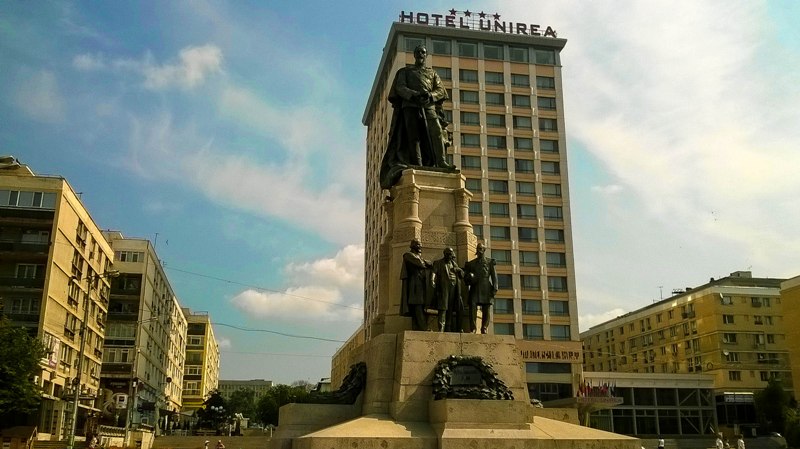
Enough with the history lessons, I’m sure you’re dying to know where you can find pigeons to feed. This is the spot. You can find here as many feathery friends as you want. See why I started with this place? I didn’t want you to walk the whole day around the city with bread crumbs in your pockets. You’re welcome!

2. The Union Museum
You will find the Union Museum (Muzeul Unirii) just a few minutes away of the Union Square. Totally ignoring the fact that I said I’ll stop the history lessons (sike), you should know that the building that houses the museum has been the last residence of Prince Al. I. Cuza between the years 1859-1862. Later on, for another brief period of time, it became the royal residence of King Ferdinand.

Tip: Before you head out, make sure you check the garden in the back. It’s a quiet place with interesting pieces of modern art, where you can relax a bit.
3. Elisabeth Esplanade
Also known as The Yellow Slope, Elisabeth Esplanade (Esplanada Elisabeta) is a semicircular construction, consisting of two monumental stairways on each side, connected by a terrace at the top. Stories linked to this place go back in time even further than the moment the Elisabeth Esplanade was built (which was the beginning of 20th century). This spot was used as a meeting point by a pair of very famous lovers. The two love birds were Mihai Eminescu (Romania’s national poet) and his sweetheart, Veronica Micle. Yeah, people used to have fixed meeting points before smartphones and location sharing existed. Hard times, am I right?
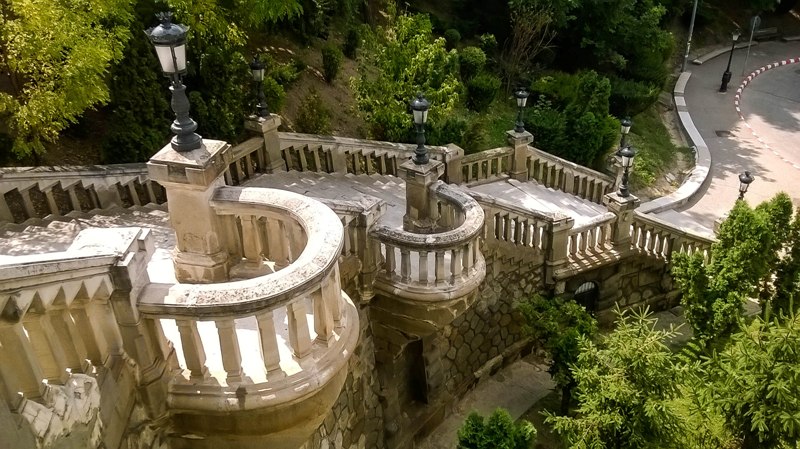
4. National Theatre “Vasile Alecsandri”
The construction of the National Theatre (Teatrul National “Vasile Alecsandri”) started in the late 1800 and its architects were the same that designed numerous theatres across Europe, including the ones in Vienna, Prague, Berlin or Budapest. If you choose to visit its interiors (which I definitely recommend), you’ll get to be amazed by a full display of Rococo and Baroque style ornaments. Also, you know how they say that cultural institutions provide a guiding light for their community? Forget metaphors. Back in the days, this theatre’s power station actually supplied electricity for the city’s first public lighting system. They really took things literally.
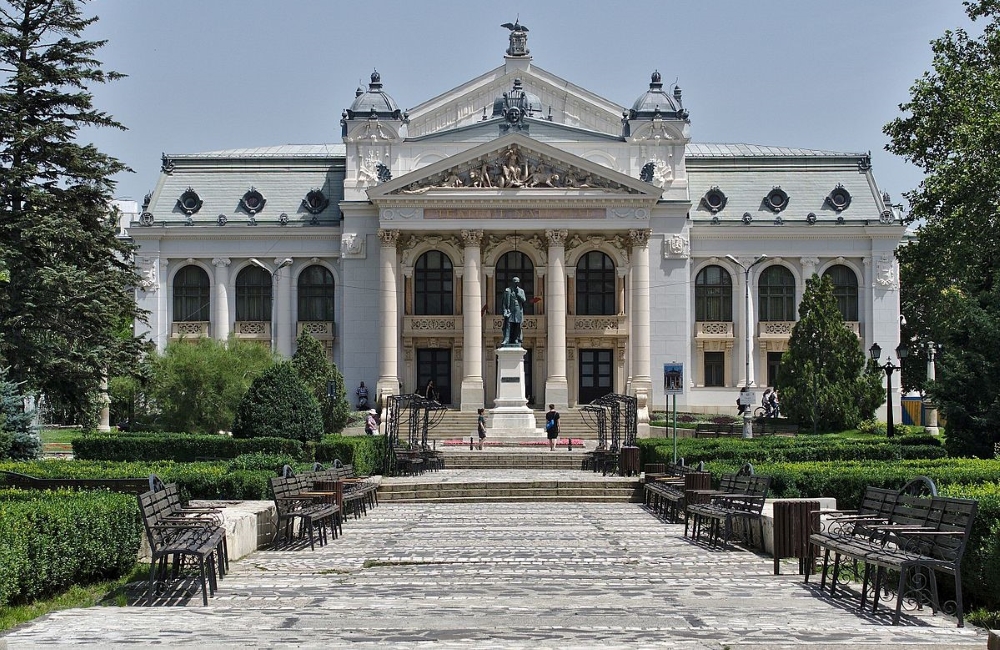
5. Moldavian Metropolitan Cathedral (Catedrala Metropolitana a Moldovei)
The cathedral impresses with its size, considering that it is one of the biggest Orthodox churches in the country. The Moldavian Metropolitan Cathedral (Catedrala Metropolitana a Moldovei) was built in the Neoclassical architectural style and the interiors are decorated with Renaissance sacred images and elements, painted by a renowned Romanian artist, Gheorghe Tattarescu.

6. The Three Holy Hierarchs Monastery
The Three Holy Hierarchs Monastery (Manastirea Sfintii Trei Ierarhi) was completed in 1639, during the reign of Prince Vasile Lupu. The reasons why you should never ever consider to skip this sight when in Iasi are numerous. First of all (and most important in my humble opinion), is the stone facade. From the base and all the way up to the steeples, the white exterior walls have intricate patterns carved on them, combining romanian motifs with Byzantine and Asian elements. The level of detail is so high, that the whole church resembles a filigran. Trust me, the photos don’t do it justice. From the moment it was built, the church was meant to be a royal burial ground, which it is until present days. If you step inside you can see the tombs of several Romanian rulers, including Al. I. Cuza. Told you we’d get back to this guy.
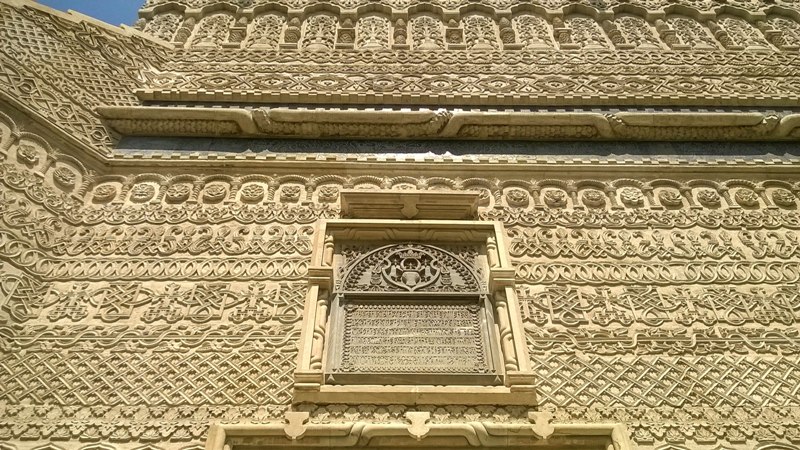
7. Dosoftei House
Dosoftei House (Casa Dosoftei) is one of the oldest in the city. It was named after the Metropolitan Bishop Dosoftei, who used it as a printing house until 1686. The work completed here had a great impact over increasing the number of books written in Romanian language, rather than in latin or greek, like it was the custom of the times. In present days, Dosoftei House accommodates The Museum of the Old Romanian Literature.
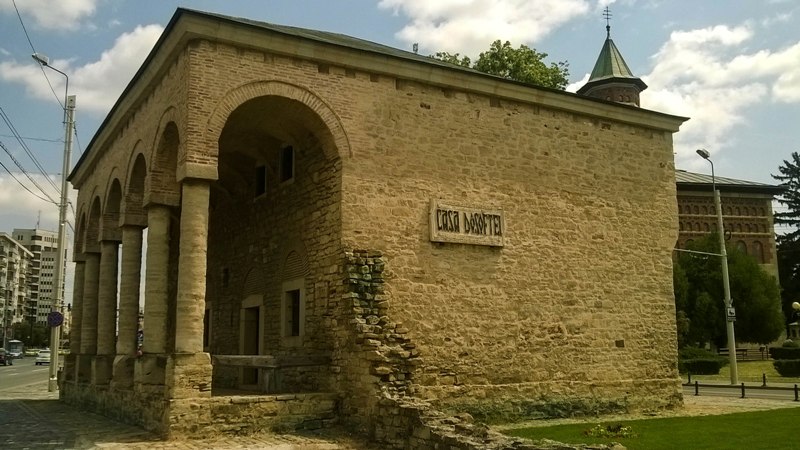
8. Palace of Culture
The Palace of Culture (Palatul Culturii) is truly a masterpiece, inside and outside. Combining three architectural styles (Romantic, Neo-gothic and Neo-baroque), it’s definitely the most impressive landmark of Iasi. The palace houses not one, but four museums: History Museum, Art Museum, Ethnographic Museum and Science & Technical Museum. Besides the permanent exhibitions, there are many other temporary exhibits brought to the public eye throughout the year.
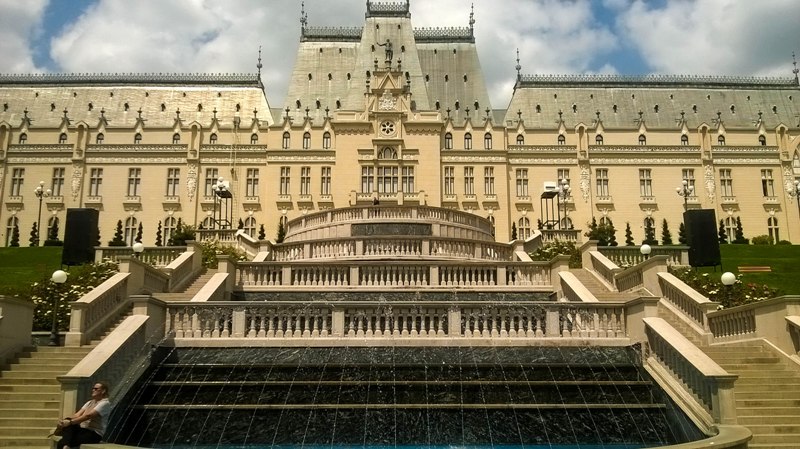
9. Botanical Garden
Iasi’s Botanical Garden (Gradina Botanica) is the largest and oldest in Romania. In addition to the classic gardens and greenhouses that you usually find in other places, this particular one also has a pond and beautiful designs for the exhibits, like zoomorphe topiaries. It is a place of beauty, peace and quiet where you can go in a sunny day for a long walk.
10. Copou Park
Copou Park (Parcul Copou) is the oldest public park in Iasi. This park is the main reason why you should visit Iasi around June. As you walk down the alleys, you can see among other types of trees, like maple and ash trees, a lot of linden trees. You will definitely smell them too! For me, seeing them in bloom in Iasi is a somewhat similar to seeing blooming cherry trees in Japan. It’s a visual and olfactory heaven. One in particular, situated in the center of the park, caughts the eye. It is Eminescu’s Linden Tree, named after the lovey dovey guy we mentioned before, who used to sit in its shade and write his highly acclaimed romantic poems.

11. The Hall of Lost Footsteps
The Hall of Lost Footsteps (Sala Pasilor Pierduti) is located inside Al. I. Cuza University, the oldest university in the country. The Hall of Lost Footsteps is hardly ever mentioned in any travel guide of Iasi, but it is a well-known place among locals. As the name suggests, it is a long hallway, where you can find 19 murals painted by a renowned Romanian painter, Sabin Balasa. The murals depict Romanian legends and universal myths, as well as cultural references, in a cosmic manner, using a lot of vibrant shades of blue. The last category is represented mainly by illustrations of Eminescu’s world of poetry.
Fun Things to Do in Iasi
Iași is brimming with exciting activities for visitors of all ages. Challenge your wits at one of the city’s immersive escape rooms, where you can solve puzzles and unravel mysteries in a race against time. For those seeking physical activity, sport centers with climbing walls offer a thrilling way to test your strength and agility. Game and entertainment centers in Iași provide endless fun with billiard tables, bowling alleys, and a variety of arcade games. Additionally, you can enjoy laser tag, virtual reality experiences, and indoor playgrounds, ensuring there’s always something entertaining to do in this vibrant city.
Finding Accommodation in Iași
Iași offers a wide range of accommodation options to suit all budgets and preferences, from luxury hotels to cozy guesthouses and budget-friendly hostels. Locals usually book accommodation through Airbnb or Booking.com, so that’s where you’ll find the largest selection of apartments and hotels. Whether you’re looking for a centrally located hotel or a tranquil retreat, you’re sure to find the perfect place to rest and recharge in this vibrant city.
Discover More Experiences in Iasi and Beyond
If you’re wondering if there are other types of experiences you can have in Iasi as well, the answer is yes! You can go on wine-tasting tours, you can take cooking classes to learn the secrets of the delicious Romanian dishes or you can immerse yourself in the history and culture of Iasi with a knowledgeable guide. You can even join a complete bike tour of the city (50 km)! Iasi is also a good starting point to explore the surrounding areas. For example, you can hike in the Bicaz Gorges, or visit the famous painted monasteries of Bucovina, which are included in the UNESCO world heritage.
Now, I know that most travelers have other cities to focus on when they plan a visit to Romania. They usually choose either the most accessible city, which is obviously the capital city Bucharest, or more famous cities like Brasov or Sibiu. If you’re one of them, I hope I managed to draw a little bit of attention on Iasi too. If I did, tell me in the comments so I can start my happy dance :)
